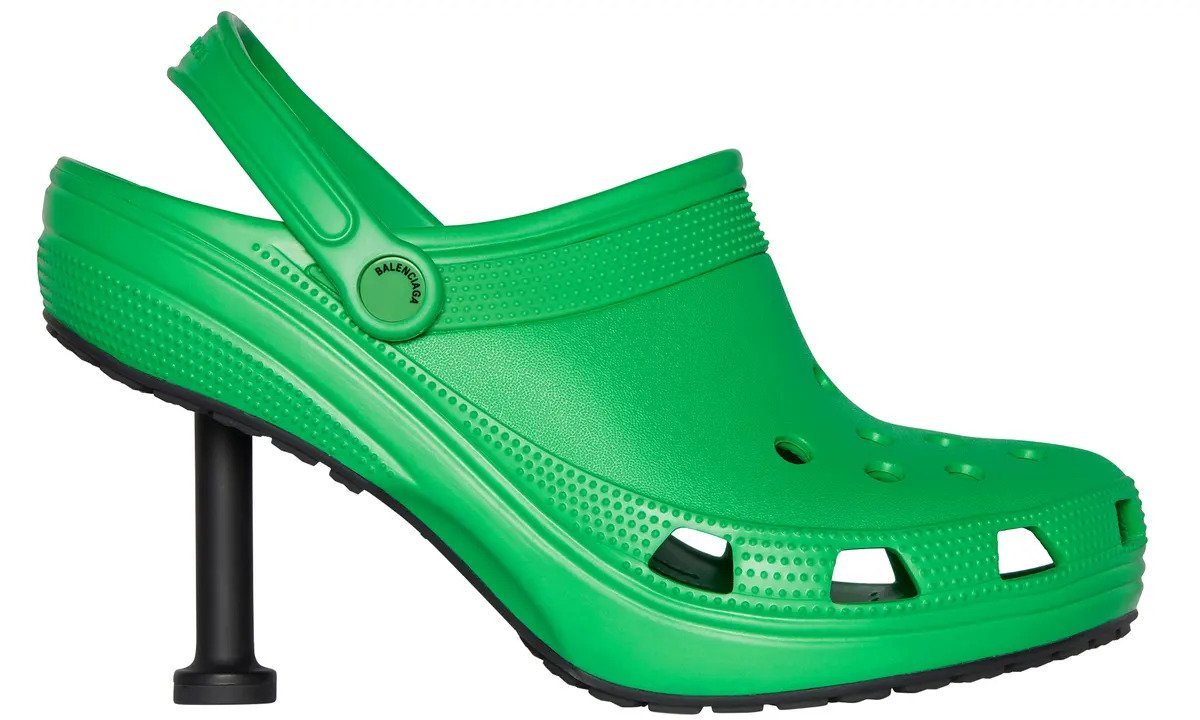From Ugly Shoes to the Era of Not Caring About Others’ Opinions
The existence and trend of “ugly shoes” have their reasons. The rise of “ugly-chic” footwear (a term that gained fame around 2020) has sparked debates and generated diverse opinions in the fashion world in recent years. Despite their label, these shoes have become a popular style, embraced by individuals seeking to assert their personal identity through fashion.

Surprisingly, the realm of “ugly shoes” continues to dominate the fashion scene in 2023. While it may sound counterintuitive, wearing “ugly-chic” shoes has become a recent focal point. Styles like the chunky Birkenstocks sandals or the exaggerated UGG platform shoes are favored not just for their comfort and convenience but also as bold fashion statements challenging conventional aesthetics.
Unique designs showcase the boundless creativity of designers and have taken over fashion forums. Examples include Margiela’s split-toe boots, Y/Project’s towering thigh-high boots, or JW Anderson’s frog-shaped loafers and the latest cat-foot high heels. A quintessential example of “ugly-chic” footwear is the perforated Crocs clogs that once caused a sensation, or the dad sneakers with a bulky appearance still eagerly embraced by women.
When asked about the reason behind this trend, fashion designer Vanya Harahap suggests that people desire distinctive and attention-grabbing fashion photos for social media, specifically Instagram.

Social media always has a strong viral nature. However, with a constant influx of information on platforms every day, a unique story is needed to create a buzz. Boots resembling crawling fingers from AVAVAV is just the shock factor needed to ignite lively discussions on social media. Whether people love or hate these designs, everyone gets involved in discussions, giving these “ugly-chic” products more attention.
Why Do “Ugly Shoes” Stimulate Our Minds and Excite Us So Much?
The human imagination is the key to the allure of these eccentric-looking shoes. Our brains tend to prioritize the unusual over the simple. Dr. Carolyn Mair, a psychologist specializing in fashion, explains that familiar and ordinary things make us less attentive and vigilant, as we perceive them as non-threatening. Therefore, wearing fashion items with an unconventional appearance helps individuals attract more attention, much like a peacock showcasing its tail.

Furthermore, the popularity of “ugly shoes” is rooted in challenging the increasingly prevalent definitions of beauty and ugliness. The fashion industry has grown tired of flawless and elegant designs over the years. The societal definition of beauty often revolves around being tidy, orderly, and neat.
These “ugly-chic” shoes defy these conventional standards of beauty, introducing an element of rebellion into the fashion industry. By testing out “ugly” shoes, people are gradually affirming their personal values and expressing a more authentic way of living.

Another comforting aspect of these shoe designs is the comfort they offer, which many traditional shoes lack. These designs prioritize comfort through thick soles, ample width, and durable materials suitable for everyday wear.
By prioritizing comfort over style, “ugly-chic” shoes make it easier for people to move around without sacrificing comfort for the sake of fitting into supposedly beautiful and trendy designs. This psychology extends to other fashion items, as a study conducted by Professor Karen found that nearly 60% of women choose to wear oversized, loose-fitting clothing when feeling down, as it provides a sense of comfort and emotional security.

Lastly, “ugly shoes” represent a desire for freedom and the yearning to explore new, unfamiliar emotional experiences. In her book “You Are What You Wear,” Dr. Jennifer Baumgartner analyzes how clothing can reveal a person’s personality, psychology, and mindset. These eccentric shoes act as a gateway to unexplored fashion territories, where you can feel exhilarated by being “unlike anyone else” and celebrate your individuality and uniqueness. With these designs, you feel empowered, valuing your own qualities over conforming to general standards.
Do we really approach a time when no one cares about what you wear?
In recent years, as fashion interest has grown, challenges to conventional beauty standards have also increased. The adoption of “ugly shoes” can be seen as part of this trend, reflecting a rebellious spirit in fashion.
When you can comfortably wear what you love, such as oversized boots, it’s a moment when you can ignore evaluations of your personal aesthetic taste. You wear the clothes that make you feel the most confident, knowing that they suit you.

However, the trend of “ugly-chic” shoes may not be for everyone. Yet, its popularity has significantly impacted the fashion industry. Whether you love or hate this trend, these eccentric-looking shoes have left a mark and continue to challenge traditional beauty standards, as well as redefine the concept of “dressing beautifully.” The future of a fashion concept “without judgment” may not be too far away.
As fashion continues to evolve, we can expect to see more unique and creative styles that break traditional norms. Fashion is cyclical, so the dichotomy of beauty-ugliness is an unsustainable evaluation. What was once considered ugly may become beautiful and appealing with appropriate clothing combinations and suitable occasions.


